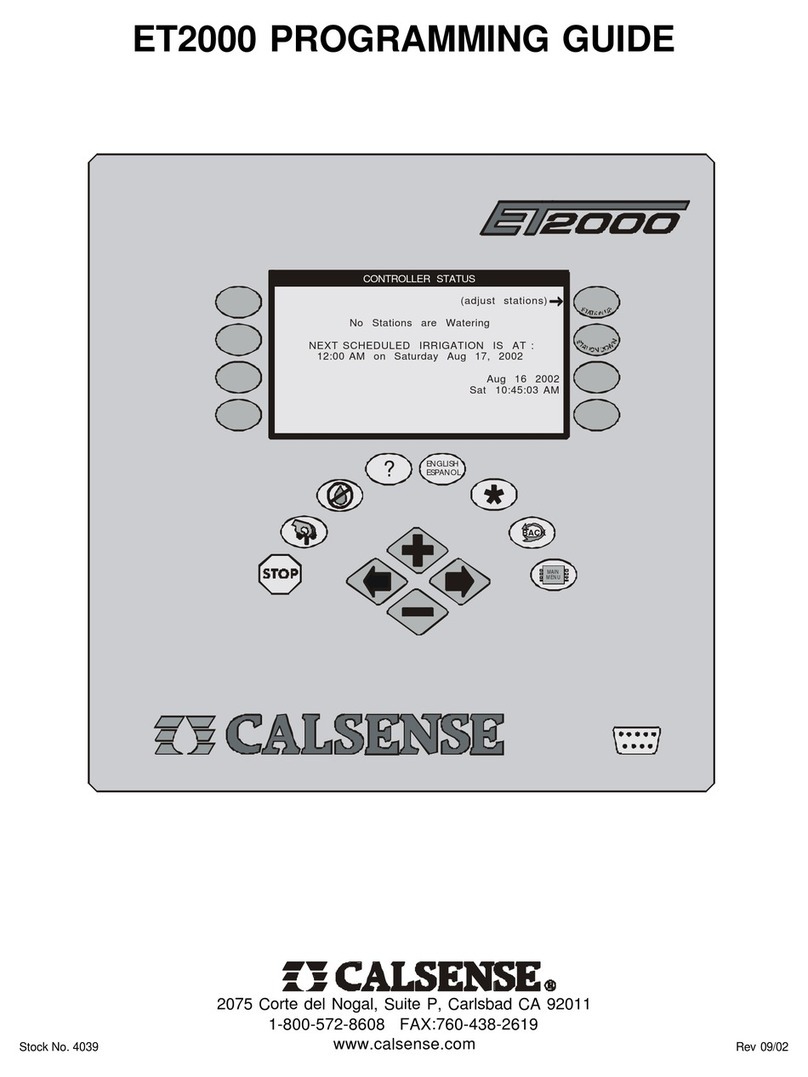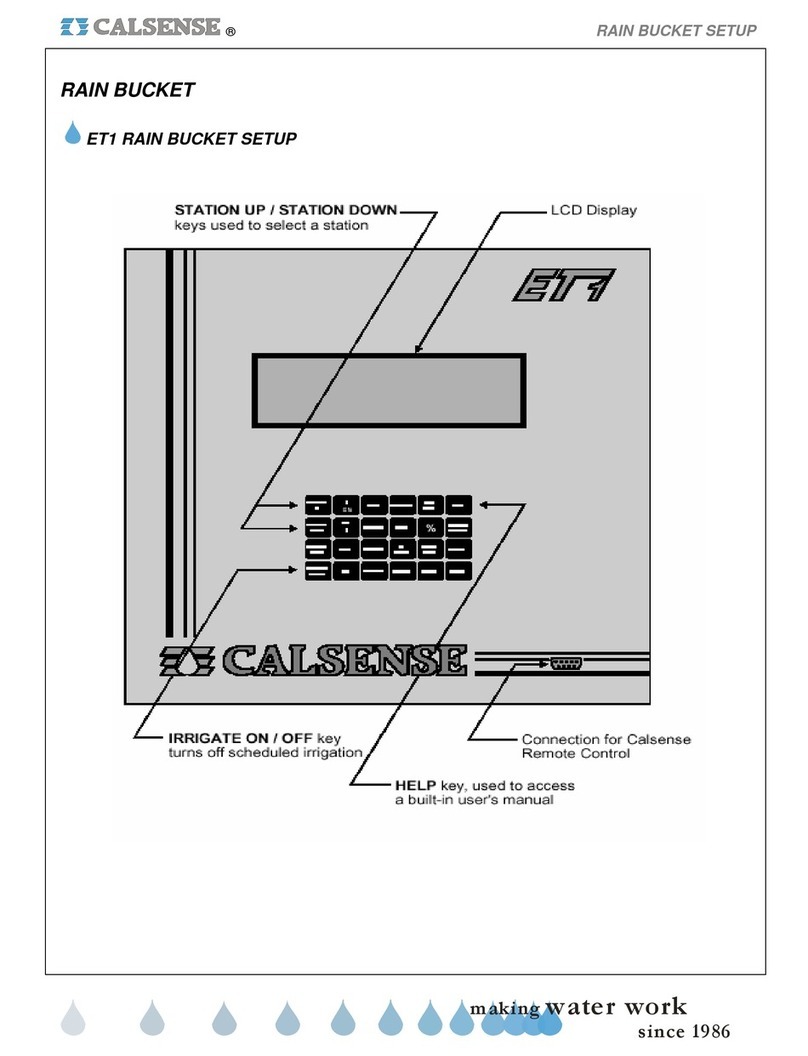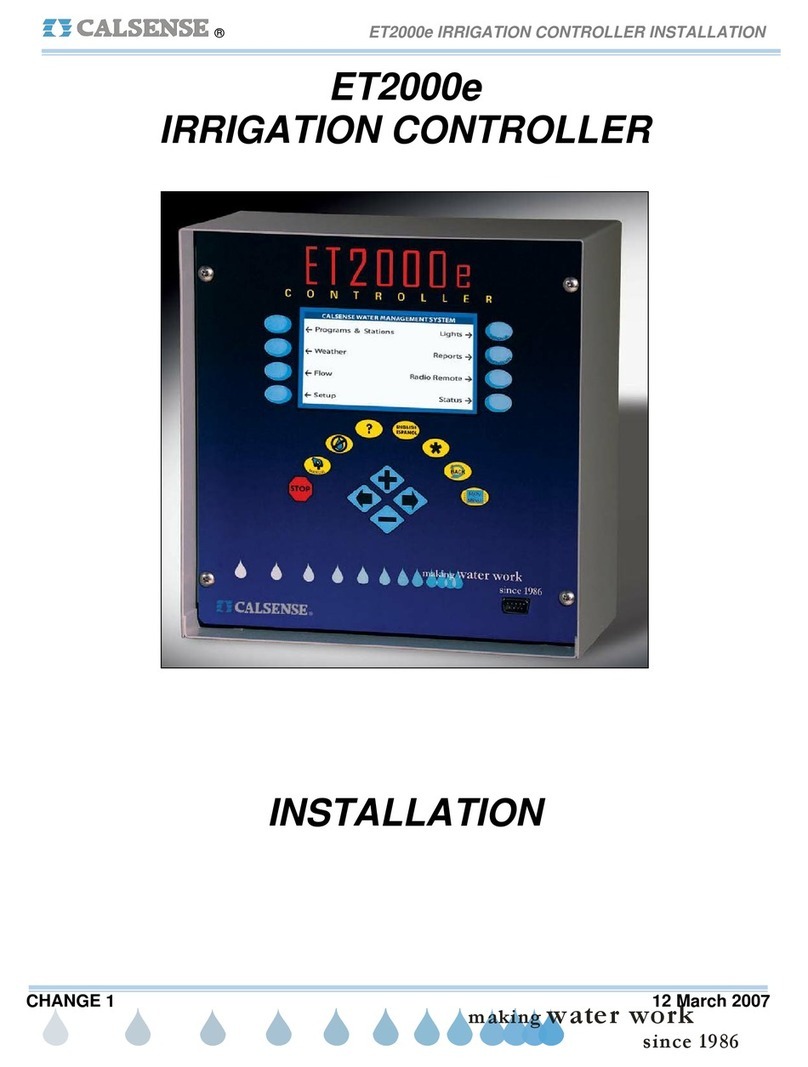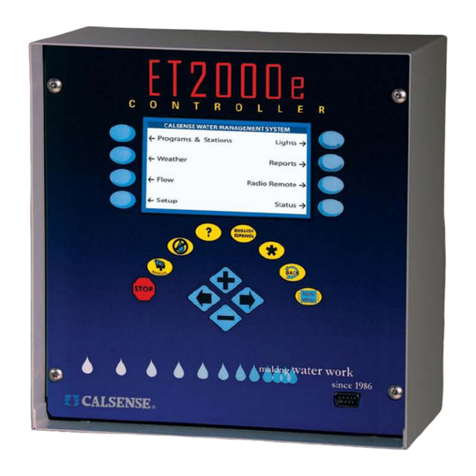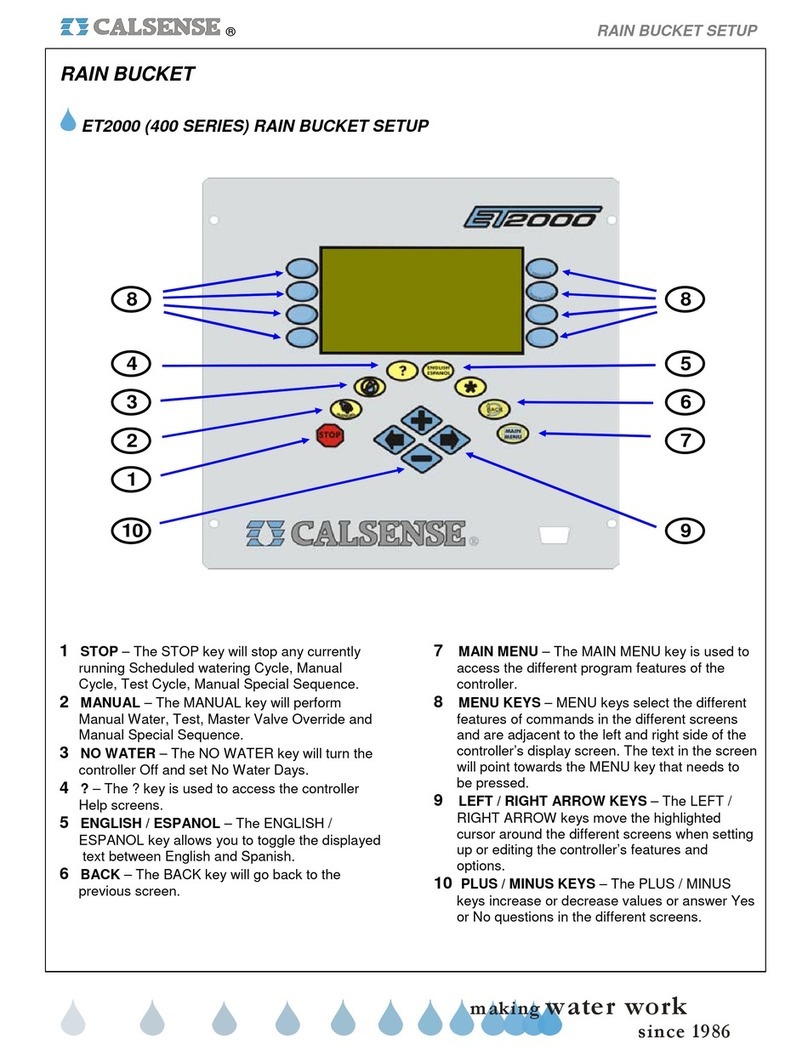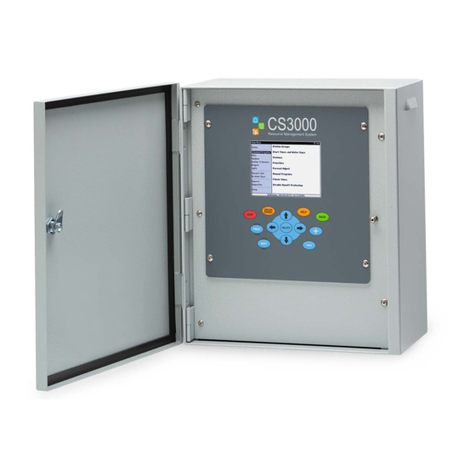
CS3000 User’s Guide
6 Calsense
Introduction and Getting Started
Calsense uses the power of data intelligence and smart technologies to usher in a new era of water
management solutions for our clients and the planet.
We began our journey in water management over 30-years ago by providing central control for
landscape irrigation across diverse industries, including municipalities, K-12 school districts,
departments of transportation, and more. We earned a reputation for cost-effective solutions that
enhance the beauty and health of our customers’ landscapes. Today, with the need for water
sustainability universally recognized, our data-driven approach is one the entire industry is seeking to
emulate.
The Calsense CS3000 Irrigation Controller is an important water conservation and management tool.
Some of its major water management features include flow monitoring and weather-based irrigation
which uses daily evapotranspiration (ET) to automatically calculate station run times based upon
landscape details such as plant material, head type, and sun exposure.
The CS3000 provides a wide range of programming flexibility, including:
•Unlimited programs which can water individual stations or interspersed to maximize system
capacity and reduce watering time
•The ability to assign landscape details as plant material, head type, sun exposure to groups of
stations to simplify programming of stations with similar characteristics
•Support for managing flow on up to four mainlines and 12-points of connection simultaneously
when sharing flow with multiple controllers
•Automatic cycle and soak scheduling to water each station for a fixed cycle time and allow the
water to soak in between cycles, maximizing water saturation and minimizing runoff
•Ability to accommodate multiple types of irrigation schedules including irrigating even days, odd
days, prescribed days of the week, and interval scheduling ranging from every other day up to
every four weeks
•Unique predictive water budget feature which maximizes savings during drought conditions
•Manual programs, which allow the user to schedule stations to run for a preset time, up to 6-
times per day, for hydro-seeding and new planting
•Electrical alerts, such as short circuits and no currents, to help the user troubleshoot field wiring
and solenoid problems
•Permanent memory stores all controller programming and setup data, including date and time,
in non-erasable memory
•Available in multiple station counts including 8, 16, 24, 32, 40, or 48 stations. If less than 48
stations are purchased initially, additional stations can be added at any time in the field.
•Supports up to 128-stations when using 2-Wire. This can either be 128 2-Wire stations or, when
combined with conventional-wired stations, up to 80 2-Wire stations and up to 48 conventional-
wired stations.



